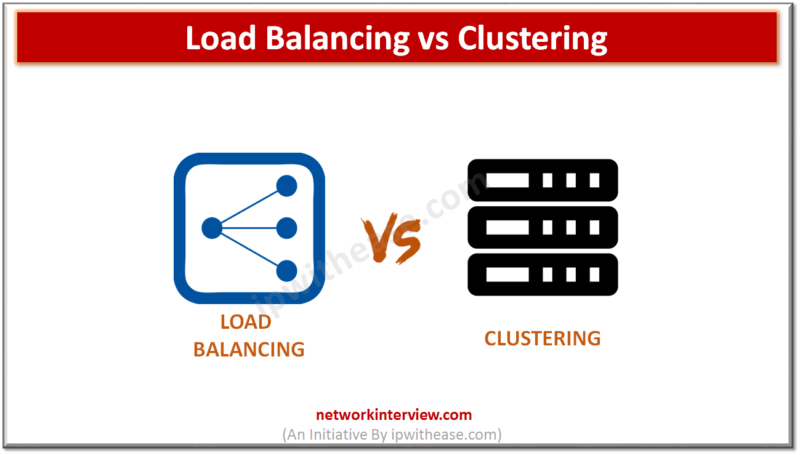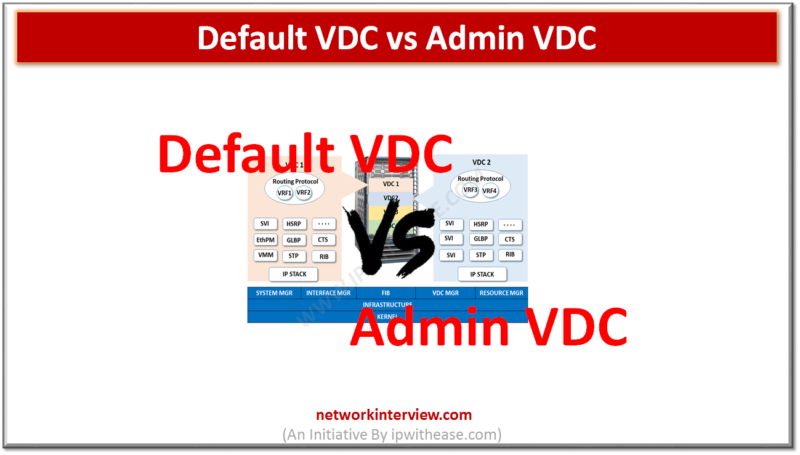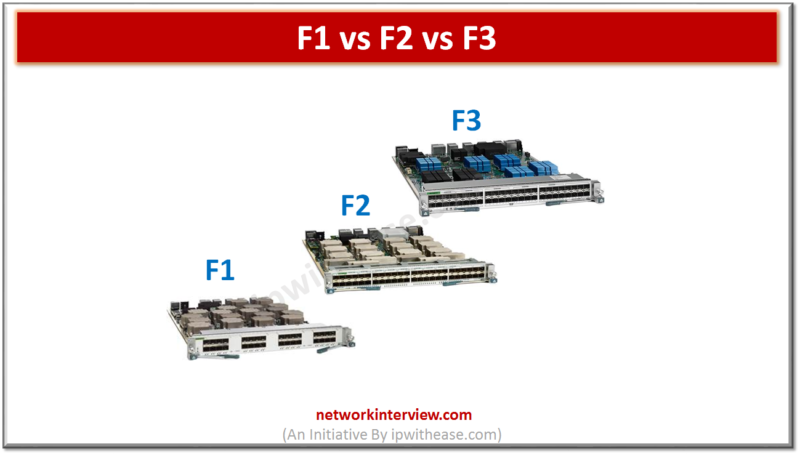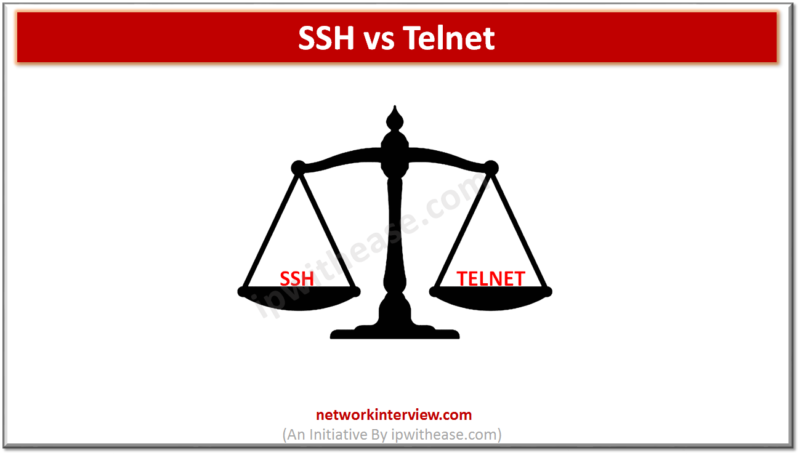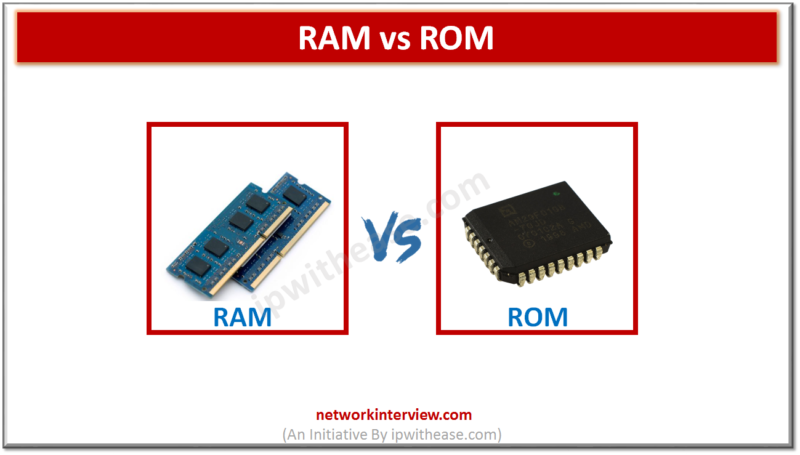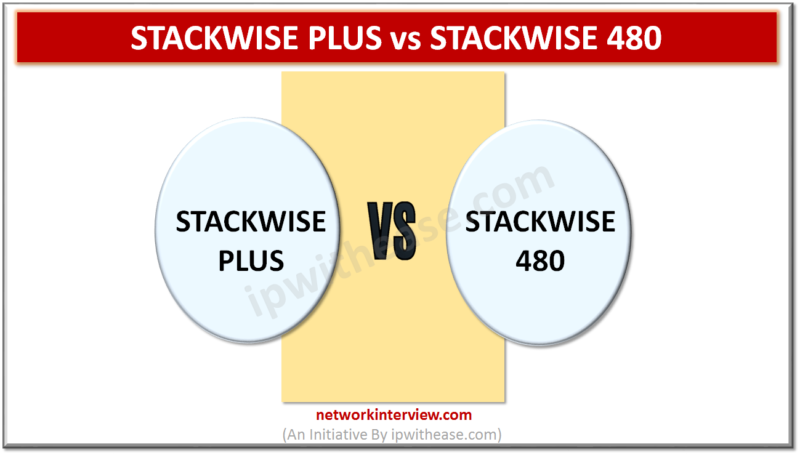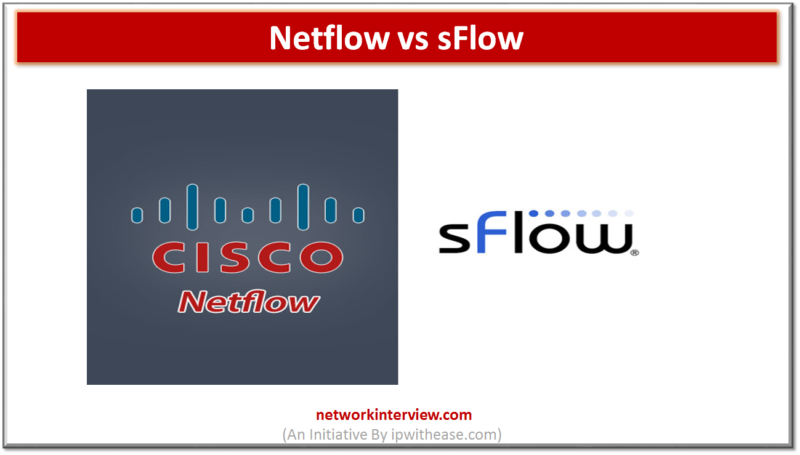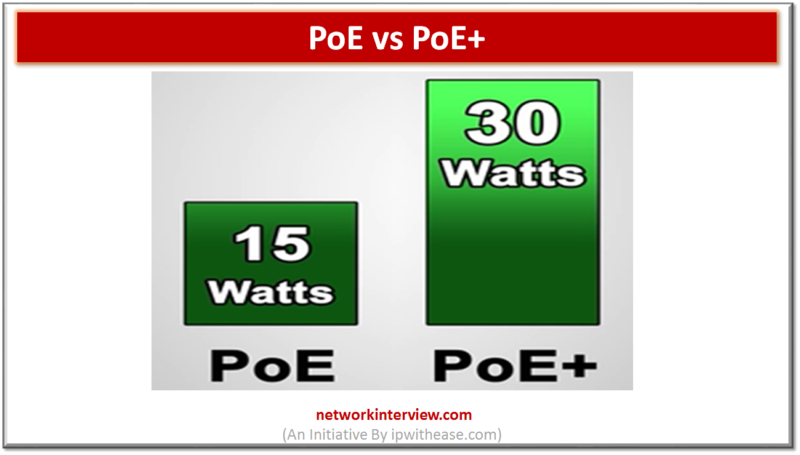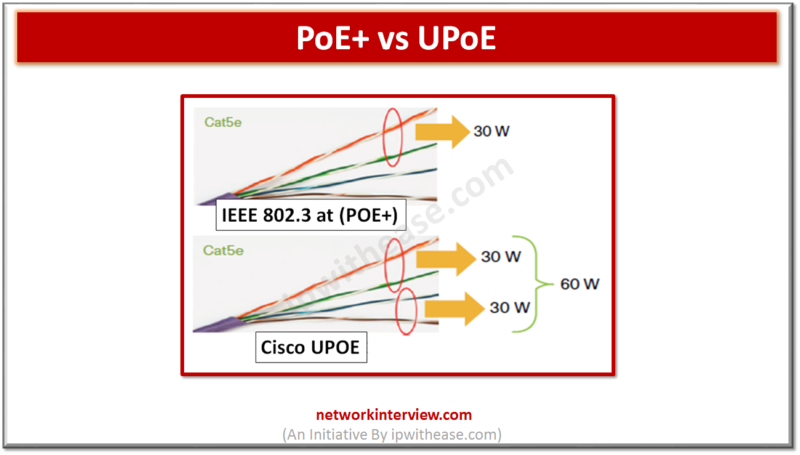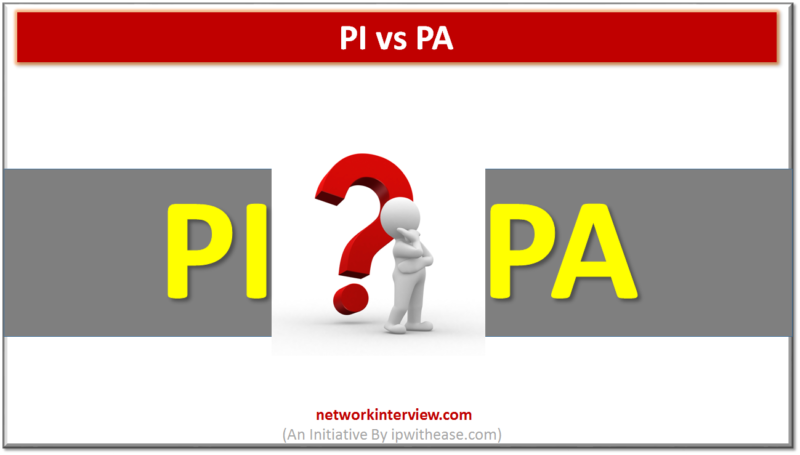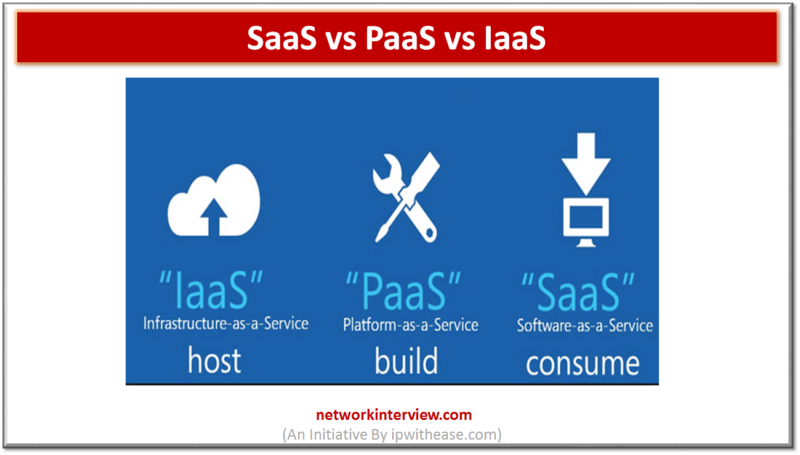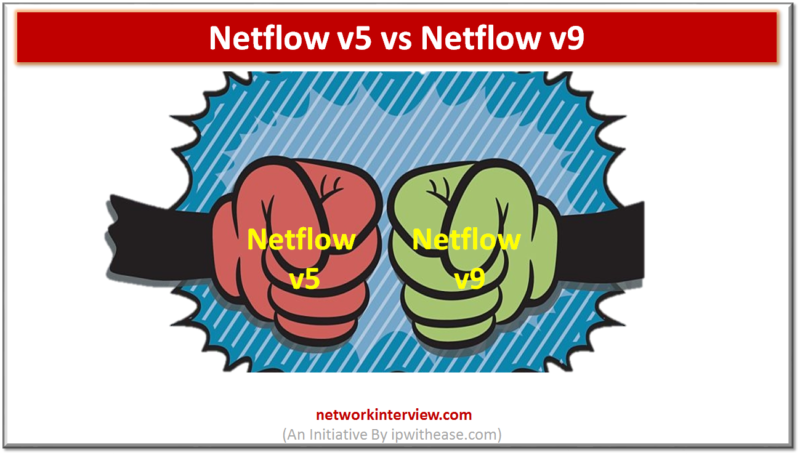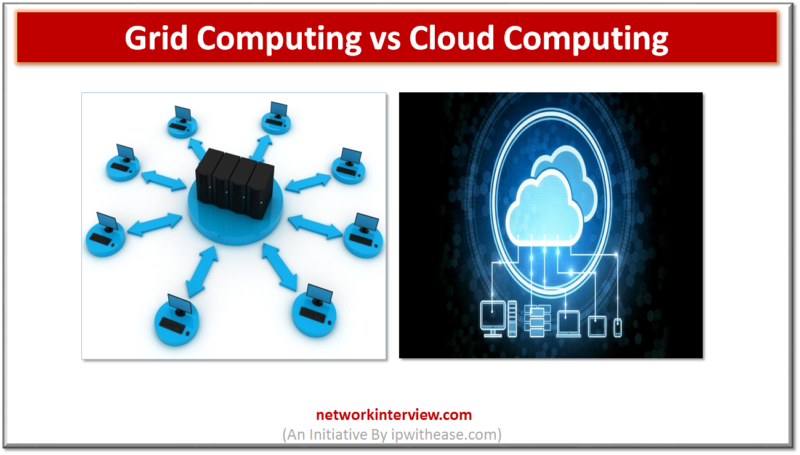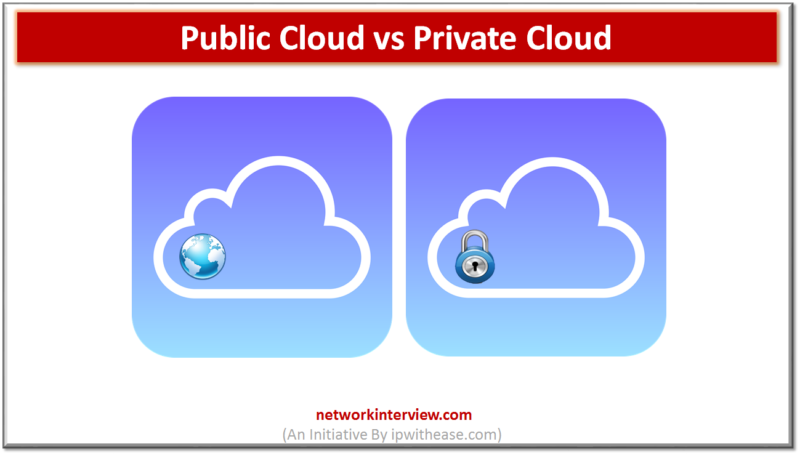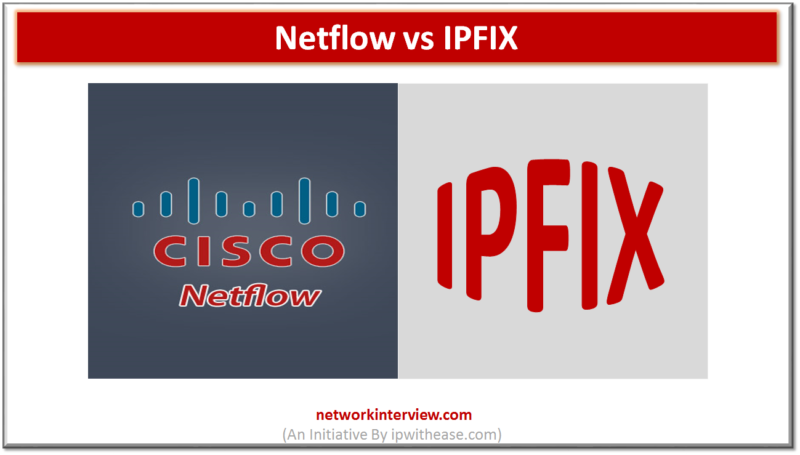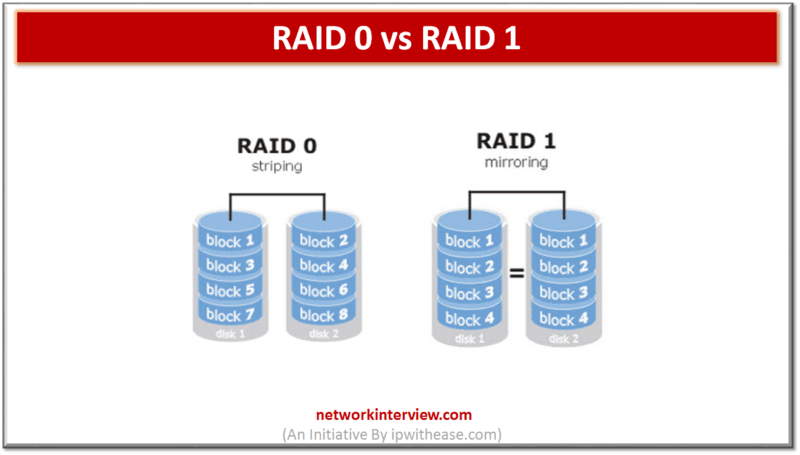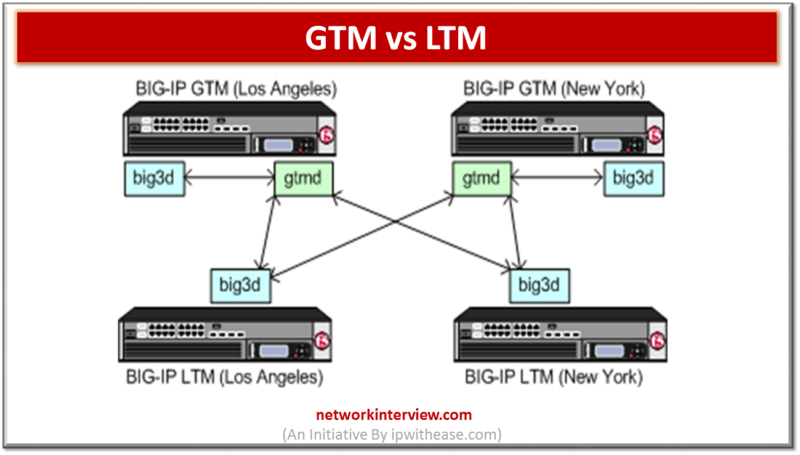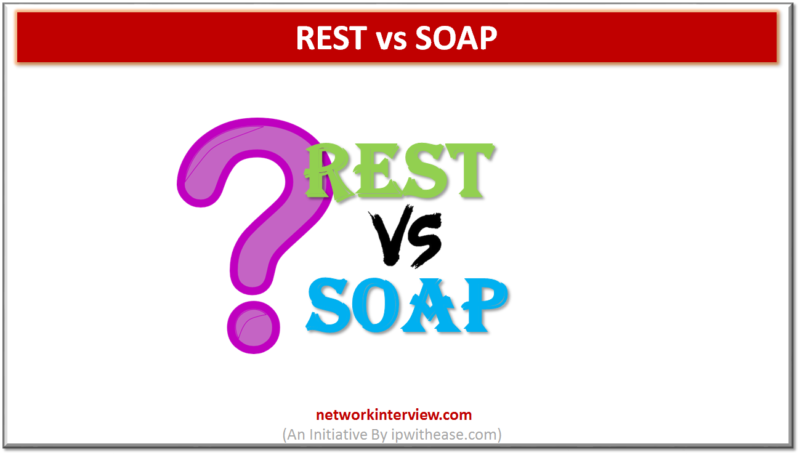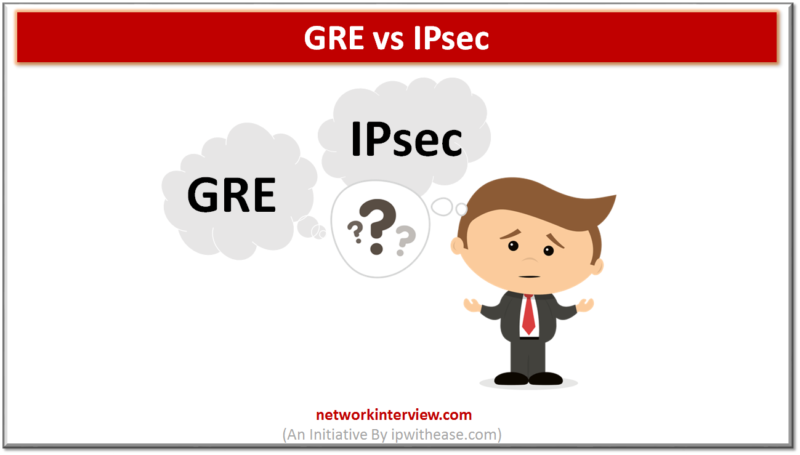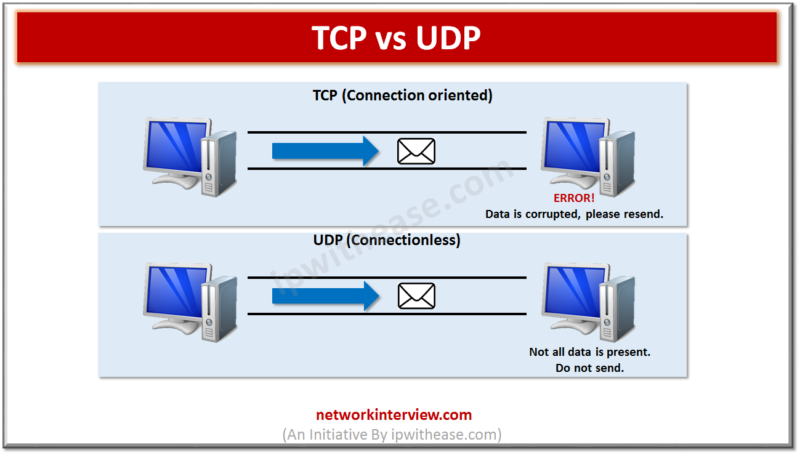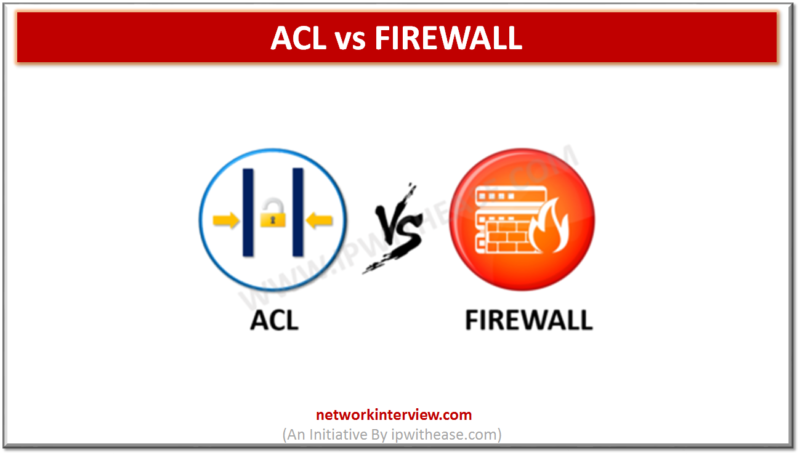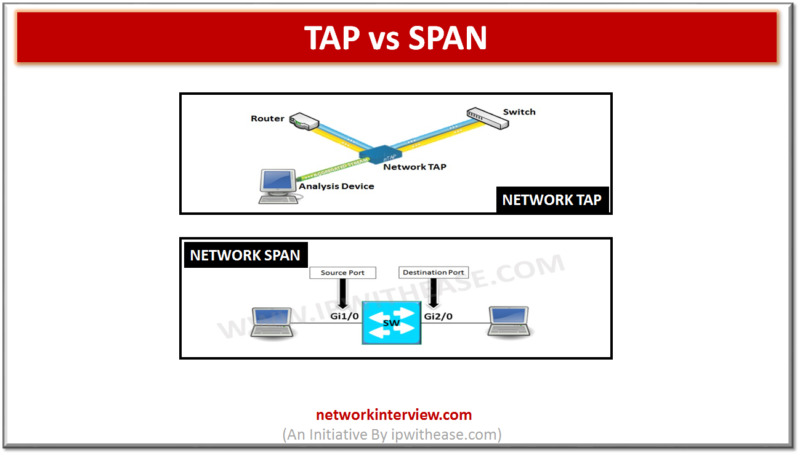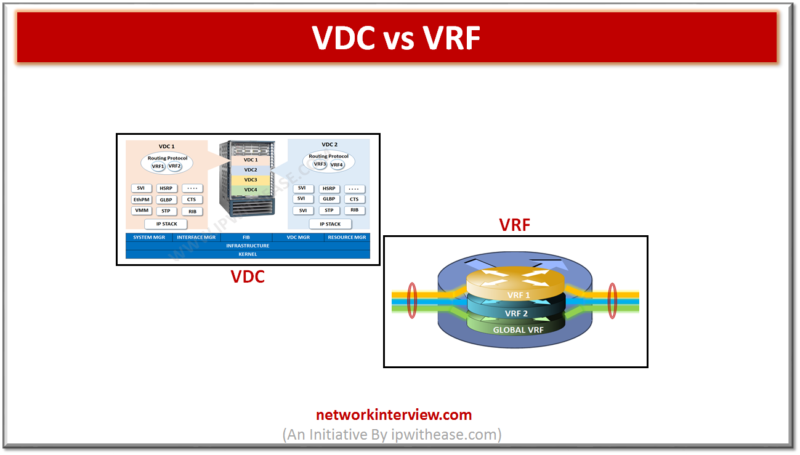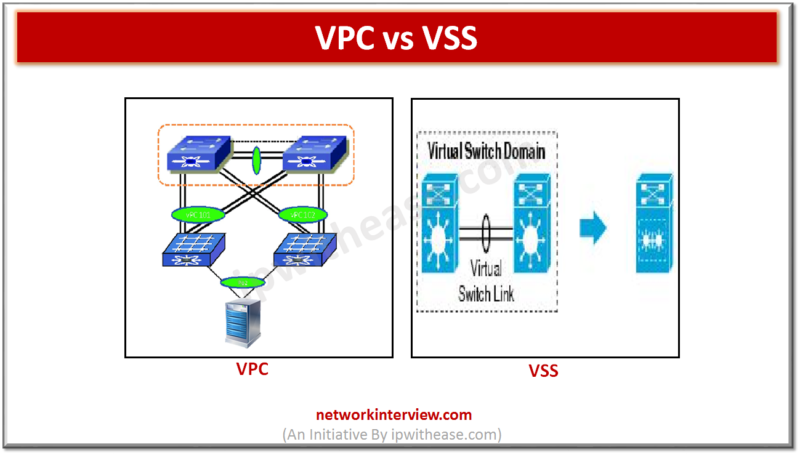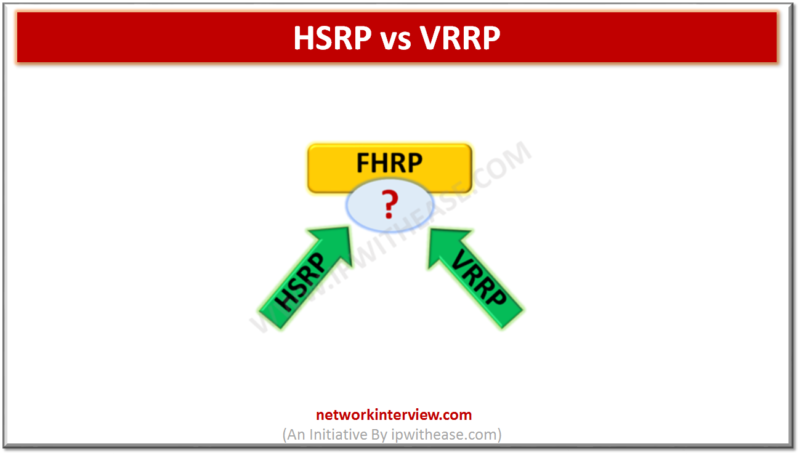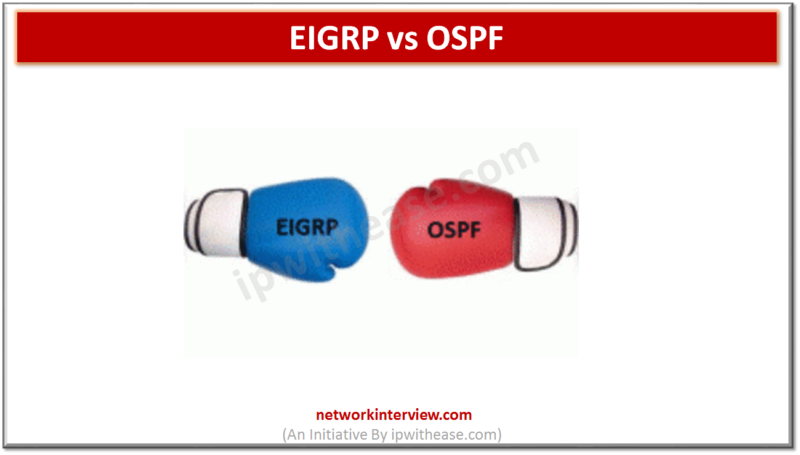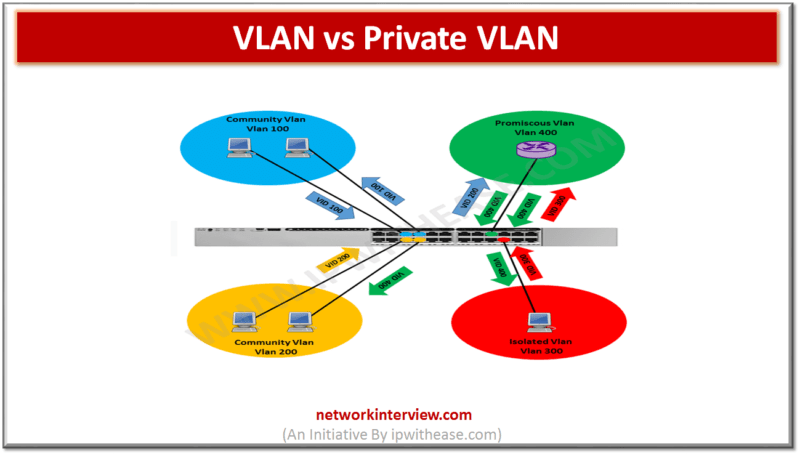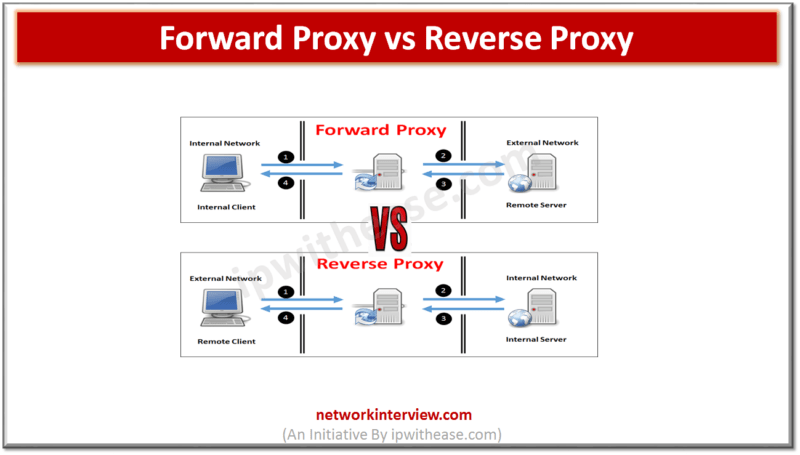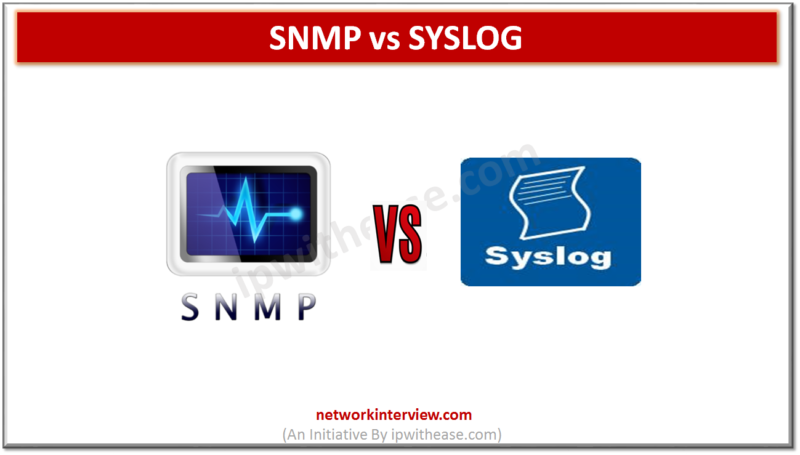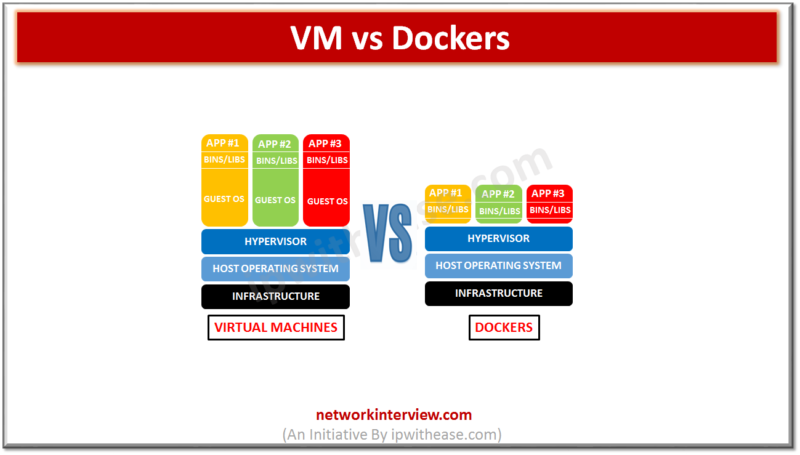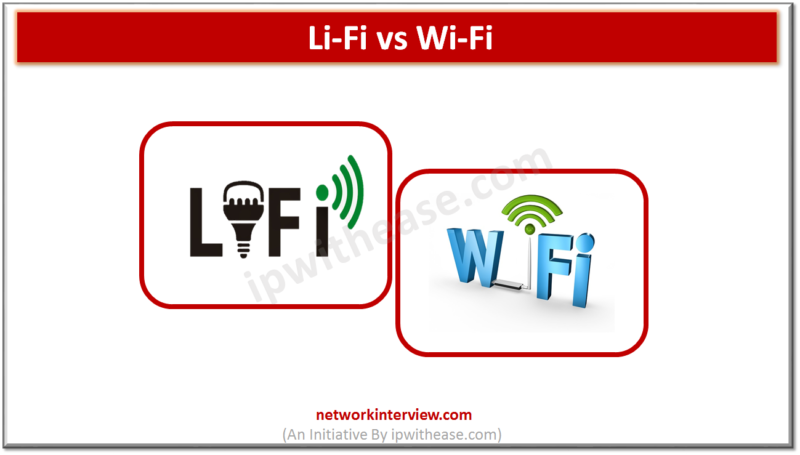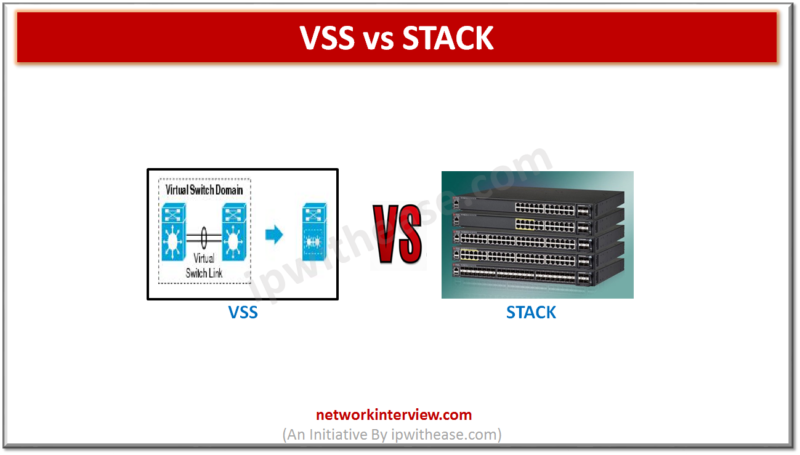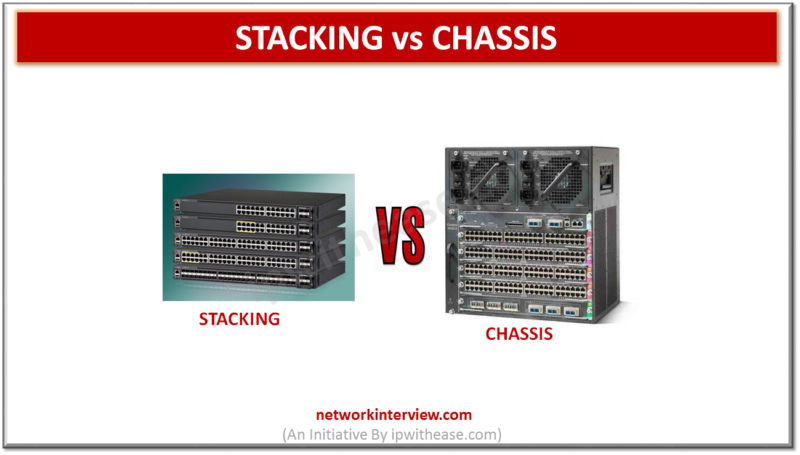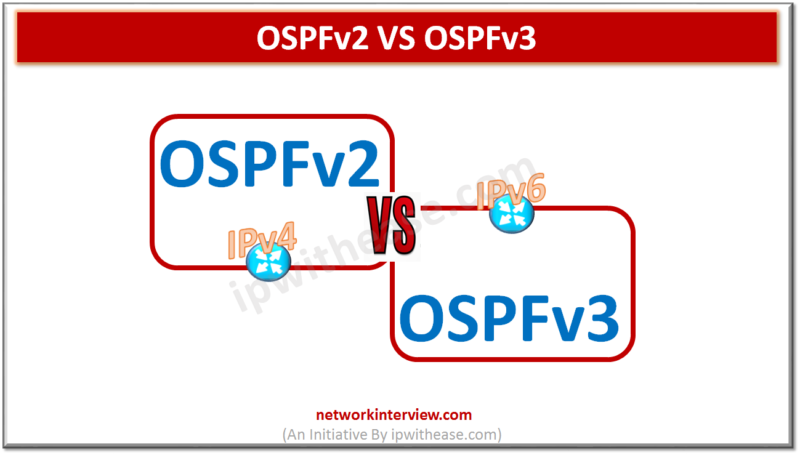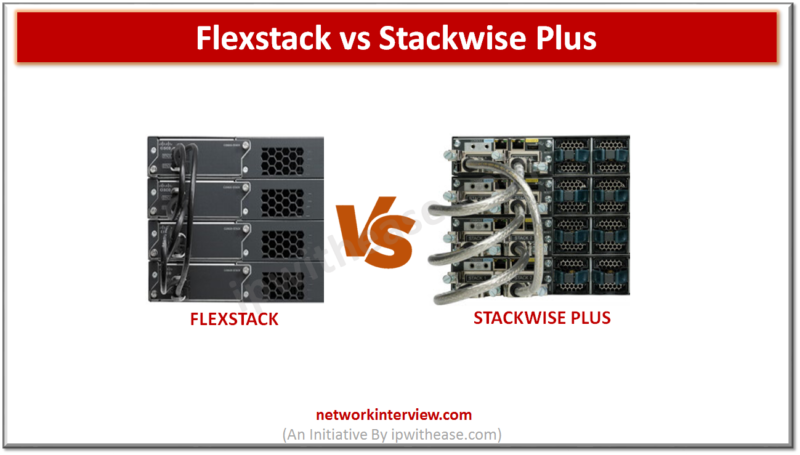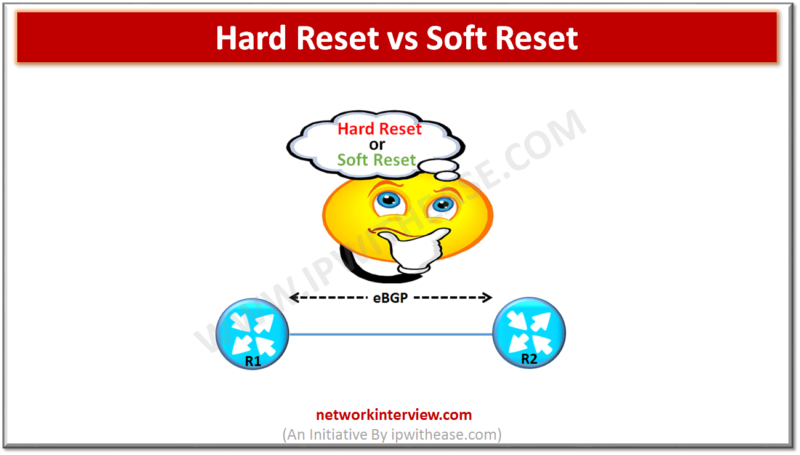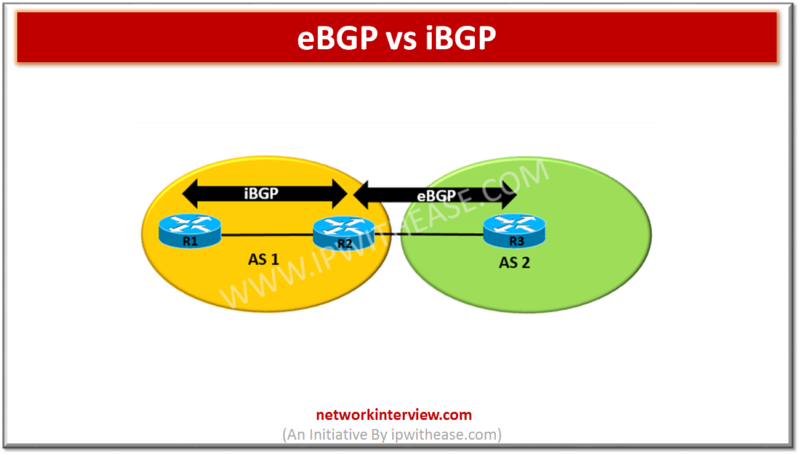Difference between SIP and PRI SOURCE:https://ipwithease.com
Difference between Load Balancing and Load Sharing SOURCE:https://ipwithease.com
Difference between Load Balancing and Clustering SOURCE:https://ipwithease.com
Difference between Default VDC and Admin VDC SOURCE:https://ipwithease.com
Comparisn between F1 Card, F2 Card and F3 Card SOURCE:https://ipwithease.com
Difference between Stackwise Plus and Stackwise-480 SOURCE:https://ipwithease.com
Difference between FlexStack and FlexStack-Plus SOURCE:https://ipwithease.com
Difference between PoE+ and UPoE PARAMETER UPOE POE+ Minimum cable type Cat5e Cat5e IEEE standard definition Cisco proprietary 802.3at Maximum power per PSE port 60W 30W Maximum power to PD 51W 25.5W Twisted pair used 4-pair 2-pair Supported platforms Presently …
Difference between PI and PA Below table summarizes the difference between the two terms: PARAMETER PA (PROVIDER AGGREGATABLE) PI (PROVIDER INDEPENDENT) Ownership Service Provider Customer IP pool announcement Only can be advertised by Service provider owning the Address Pool Can …
Difference between Netfow v5 and Netflow v9 SOURCE:https://ipwithease.com Also refer Openflow vs Netflow
Difference between Grid Computing and Cloud Computing SOURCE:https://ipwithease.com
Difference between Public Cloud and Private Cloud SOURCE:https://ipwithease.com
Difference between IPFIX and NetFlow SOURCE:https://ipwithease.com Also refer Netflow v5 vs Netflow v9
Difference between GTM and LTM FUNCTION GTM LTM Full Form Global Traffic Balancer Local Traffic Manager Industry Standard name Global Load Balancer Server Load balancer Name resolution GTM performs name to IP resolution Does not perform name to IP resolution …
Difference between REST and SOAP Below table describes the difference between REST and SOAP: PARAMETER REST SOAP REST is architectural style. It is more flexible. SOAP is protocol. It is highly specified. Industry Standard No Official Standard Has Official Standard …
Difference between TCP and UDP Below table summarizes the difference between UDP and TCP: PARAMETER TCP UDP Full Form Transmission Control Protocol User Datagram Protocol or Universal Datagram Protocol Connection TCP is a connection-oriented protocol. UDP is a connectionless protocol. …
Difference between ACL and Firewall: SOURCE:https://ipwithease.com Also refer Stateless Firewall vs Stateful Firewall
Difference between VDC and VRF: S No VDC VRF 1 A VDC virtualizes the device itself by presenting a single device as multiple logical devices. Feature which allows multiple instance of routing table to exist in a Layer 3 device …
Comparison Table: VPC vs VSS SNo VPC VSS 1 Feature specific to Nexus Feature specific to catalyst 6500,4500 Series 2 Separate control plane for both switches. 2 Switches merge to form 1 logical Switch with a single control plane. 3 …
Difference between VLAN and VXLAN: Below table summarizes the differences between the two: PARAMETER VLAN VxLAN Full form Virtual Local Area Network Virtual Extensible LAN Definition Layer 2 partitioned & isolated broadcast domain in a network. Overlay tunnelling scheme where …
Difference between EIGRP and OSPF: EIGRP OSPF Advanced Distance Vector Routing protocol Link State Routing protocol Open standard(informational). EIGRP was converted to open standard in 2013. Open standard of IETF, supported by most vendors. Fast sub-second convergence Slower convergence than …
Difference between VLAN and Private VLAN: S No. VLAN PRIVATE VLAN 1 Different Vlans must belong to different IP subnets. PVLANs belong to the same IP subnet 2 Vlan works in Layer 2 and Layer 3 PVLAN is method to …
Difference between Forward Proxy and Reverse Proxy: SOURCE:https://ipwithease.com
Comparison Table: Cisco PIX vs Cisco ASA Below table describes the difference between Cisco PIX and Cisco ASA firewalls: S No Cisco PIX Cisco ASA 1 Firewall appliance Is firewall and anti-malware security appliance 2 Physical Appliance Physical and Virtual …
Comparison Table: SNMP vs Syslog Below table summarizes the main differences between SNMP and Syslog: S.No. SNMP SYSLOG 1 SNMP allows for remote monitoring of SNMP-Allowable device on network. SYSLOG is a different protocol that can be used for exchanging …
Comparison Table: Li-Fi vs Wi-Fi Below table summarizes the difference between Li-Fi and Wi-Fi: FEATURE / PARAMETER LI-FI WI-FI Technology IrDA compliant devices WLAN 802.11a/b/g/n/ac/ad standard Operating Frequency 10,000 times frequency spectrum of radio 2.4 GHz , 4.9 GHz and …
Comparison Table: Stack vs VSS Below table describes the difference between Stacking and VSS: FEATURE STACKING VSS Cabling Uses Proprietary Cabling Uses 10G Interfaces Distance Supported Limited by distance VSS members can be in geographically distant locations Chassis members Scalable …
Comparison Table: Stacking vs Chassis Below table describes the difference between Stacking and Chassis: PARAMETER STACKING CHASSIS Cost Less Expensive More Expensive Ease of Redeployment Easier to resize or redeploy Not easy to resize or redeploy Placement Preferably at Access …
Difference between OSPFv2 and OSPFv3 Below table summarizes the differences between OSPFv2 and OSPFv3: PARAMETER OSPFv2 OSPFv3 Routed Protocol Support IPV4 IPV6 OSPF multicast all routers IP address 224.0.0.5 FF02::5 OSPF DR and BDR multicast IP address 224.0.0.6 FF02::6 Support …
Difference between FlexStack and Stackwise Plus : SOURCE:https://ipwithease.com
Difference between BGP Hard Reset and Soft Reset: PARAMETER HARD RESET SOFT RESET Philosophy This will tear down the TCP connection between the peers and re-establish the connection with a BGP Open message and proceed with the regular message exchanges …
Before discussing eBGP vs iBGP, let’s understand the two protocols briefly. eBGP It is abbreviation for External Border Gateway Protocol and is one of the flavors of BGP protocol. eBGP Routing protocol is used between BGP speaking neighbors which belong …



